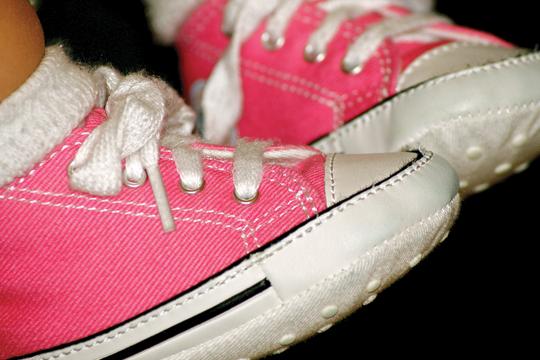Shoes spread hope around the world
September 2, 2011
Philanthropy has become as simple as purchasing a pair of shoes. Payless Shoes has followed in the footsteps of Toms with their Good Shoe Project to bring shoes to children in need.
For $19.99 plus tax, you can purchase a pair of Airwalk Hope shoes, and then in turn they will send a pair to a child in countries like Honduras or Guatemala. The idea being, having shoes will improve their life and help them to improve their health. Not being sick from shoeless related illness improves their chances for education and success in the future.
Payless ShoeSource is owned by World Vision Corporation, and has a statement from World Vision’s vice president of corporate development David Owens on their official website www.payless.com.
“Although badly needed, shoes are an unfamiliar luxury for many children in these countries, especially in rural villages,” said Owens. “Shoes can improve a child’s overall health and well-being and bolster self-esteem. Shoes can open the door to education in remote areas. Kids can play, run and jump because they know their feet are protected. Ultimately, shoes have the power to change a child’s point of view from poverty to potential. We are delighted to partner with Payless
ShoeSource and its generous customers to provide shoes to children who would otherwise go barefoot or be forced to wear threadbare shoes. We look forward to seeing the positive impact on these children and their communities when we distribute these shoes to the children.”
On a more local level, Washburn University sophomore April Wangerin works at the Payless ShoeSource located on Wanamaker here in Topeka, and provided more information on the Hope shoes themselves.
“They look almost exactly like the Toms, which are really popular,” said Wangerin, 20, who is attending Washburn for dual degrees in math and art. “They are trying to make them stylish so that they will sell. The more they sell, the more they can give away. They come in lots of colors. There’s red, black, a camo color, tan and blue.”
The project was extended due to its popularity.
“They have decided to keep it going because it has been going so well,” said Wangerin. “Now they are coming out with new styles as well. The past couple of months we got in a pair of glittery silver ones.”
Wangerin says she has her eye on a pair of black Hope shoes and is interested in buying a pair now that her size has come back in with the fall shipment. She likes the Good Shoe Project.
“I think it’s a great project, and maybe they should do it in more than one shoe,” said Wangerin. “Maybe one casual and one dressy, then give a shoe away, not necessarily a dressy shoe, for every one purchased. I think it’s a good start at least.”
Toms Shoe Company was a pioneer in the idea of matching shoe for shoe on purchases. According to their website, www.toms.com, the company was created in 2006 after Blake Mycoskie traveled to Argentina and discovered how many children were without shoes.
Mycoskie named the project the “One for One Movement,” and later that year returned to Argentina with over 10,000 pairs of shoes.
The website provides information about shoe related illnesses and the effect not having shoes can have on the impacted children. There is also a documentary on the project on the website as well, and information on ‘A Day without Shoes’ events as well. Shoes are available for purchase on both sites.



